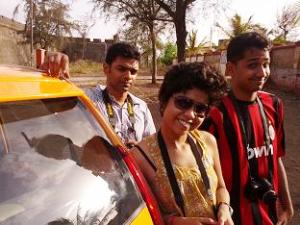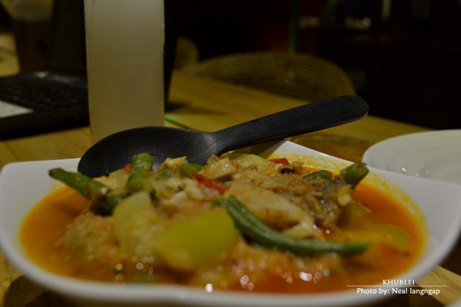1. Flipkart has become synonymous with online shopping. It has become one of India's fastest growing e-commerce outfits, known particularly for books. Can you tell us how it all began? Was it difficult to float this concept of online shopping in India?
Why did you start with books? Considering the fact that internet penetration is still very low in India, did you feel you were taking a big risk to begin with? Did people take you seriously when you had first begun?
Ans. Yes, we have grown beyond what we had imagined. What started as a simple desire to create a tailor-made product for the Indian consumer has today grown into something much larger and better than expected. The initial plan was to set up a comparison shopping site. But upon research it was realized that there was a dearth of e-commerce sites in India. This is what prompted the founders to set up their own online shopping portal. And Flipkart started operations in October 2007.
Like any business, Flipkart too faced a few challenges initially. Setting up bank accounts and convincing publishers to share their inventory was a challenge. Roping in an online payment option, key to any e-commerce portal, was also a concern. But faith in the business model and sheer perseverance paid off.
Books seemed to be a good place to start. Since they were a low-risk category, both from our and our customers' point of view, we felt that it would be easier to gain customer confidence. With low price points, it would be easier for the consumer to trust us with that initial payment. It has been more than 4.5 years since we launched and today we are not only the largest bookstore with 11.5 million titles but are fast gaining prominence across 12 different categories including music, mobiles, movies, games, computers, home and kitchen appliances, health and personal care products, perfumes, stationery etc. Added to this is our newly launched digital music store, Flyte.
Today, we have a registered user base of 2.6 million, clock daily revenues of Rs 2.5 crores and ship over 30,000 items every single day.
2. Who are your main customers and what products are popularly sold through online shopping?
For us, the early adopters are usually people who are comfortable with the net - and generally tend to be the urban youth. However, with positive word of mouth from our existing customers and our media campaign, a large number of first-time customers across demographics have tried Flipkart as well.
Books as a category remain the largest by volume. However in terms of revenue, electronics are doing very well. Today, though our book sales contribute 60% of our total sales in terms of volumes, their contribution in terms of value is only 40-45%.
Among electronics, mobiles are perhaps the hottest category followed by laptops and cameras. The home appliances and other consumer durable categories, though fairly new, are also fast catching up.
3. What do you think are the main benefits of online shopping which is not offered by conventional shopping?
Ans. There are various reasons why people choose to shop online or offline. We believe the primary reasons are choice or variety and convenience, followed by cost savings. Added to this are various features such as cash-on-delivery, EMI and 30 day replacement policy offered by online sites like Flipkart that make online shopping a reliable and attractive shopping experience.
However, given the large size of the market, we feel that there is immense scope for all kinds of players in retail. Every format has its own appeal and hence its own loyal customer base.
4. People say buying through Flipkart is cheaper. How do you manage to provide things at a cheaper rate? And how did you ensure a smooth payment delivery system?
Ans. Our lean cost model and low overheads (due to bulk purchases and lower real estate expenses) allow us to pass on some of these margins in the form of discounts on books and other items, to customers.
In fact, at times, we may not offer the cheapest deals. The difference we bring is our service. We promise the best service/experience. That's what builds consumer loyalty. And it is this service that has brought our customers back to us.
We have in place a few initiatives that ensure payment procedures are customer friendly. Online payment systems in India still have a lot of room for improvement. In addition to credit card, debit cards and net banking, we offer the hugely popular Cash/Card on Delivery option and it has gone a long way with customers who have concerns about the security of online transactions or do not possess cards.
We also introduced 'Flipkart Wallet' last year, a solution which works like a prepaid credit system that enables our customers to store money in their Flipkart account and redeem it on future purchases. Flipkart Wallet offers Flipkart's customers the convenience of making the payment once and shopping multiple times with the stored cash. This also ensures that customers do not have to go through the bank verification processes every time they buy something on Flipkart.com. The wallet cuts down on payment gateway issues as well. The 'wallet' is also best suited for a customer looking to make small value purchases - such as a song on Flyte which can be bought at as low a price point as Rs 6.
5. How did this concept of "cash on delivery" system come about?
We introduced the Cash on Delivery (COD) facility in April 2010 with the objective of expanding the market and reach out to a consumer base beyond those who owned credit/debit cards.
The Indian consumer, as a rule, tends to be quite cautious when it comes to shopping online. The security element attached to revealing their credit card details on websites has often acted as a hindrance to shoppers looking to e-commerce as a viable shopping option. Credit/debit card penetration is also low in the country.
CoD was launched in order to deal with these concerns and make online shopping available to more consumers. What started as a small pilot in Bangalore has today spread to all the major cities of India. Today, almost 65% of our total orders are based on COD.
6. India has its associated problems like poor infrastructure, roads, transport etc. How did Flipkart manage to overcome all these?
Ans. Infrastructure problems are one of the biggest hurdles faced by the e-commerce companies today. A poor supply-chain and logistics ecosystem leads to problems like delays in shipment which further erodes customer confidence in this industry.
At Flipkart we have taken several steps to counter these problems. We have set up warehouses across larger cities in order to build up our inventory and reduce to order to delivery time. We have also started our own delivery team, Flipkart logistics, which has helped ease up immensely on last-mile delivery bottlenecks.
7. You have managed to set up an office in Guwahati. Do you see the Northeastern region as a potential market for online business? What kind of customers do you get in this region and which products are in high demand?
Ans. Yes, we do see a lot of potential in the region. The north-eastern states have a lot of traffic from the younger consumers (18-25). This has been a strong market for us and we observe a lot of popularity for categories like books, music, movies and especially games.
8. How do you deal with angry customers? Is it easier to handle them as they are online?
Ans. Handling customer complaints, without having a 'face' to customer service sometimes can be bit tough, but we have ensured that we are available to our customers always and through multiple channels through which they can reach out to us - be it our exclusive 24X7 customer support helpline or social media platforms. We have been largely successful in addressing and solving their queries and issues, and quickly.
Also, the number of issues handled stand at low single digit percentages. So when someone reaches out with an issue, we ensure the person interacting with the customer reacts quickly and first solves the problem on hand. A personalized interaction always helps ease the situation.
9. You are also known as the Amazon of India. But how are you different from Amazon?
Ans. Retailing products online in India is a very different experience compared to retailing products in developed countries. The problems that we face in India are unique and we have managed to find our own solutions for them. One of the biggest hurdles we faced in the early days was in the area of distribution and supply-chain. Unlike developed countries, none of these were well-established in India - and in fact are still a major area of concern as far as e-commerce is concerned.
There are problems that have not existed traditionally for e-retailers in developed nations but are critical to solve for companies operating in India - like lower card penetration, poor infrastructure etc. We have worked out our own solutions for these, set our own benchmarks and have matched the expectations internally. We are confident of retaining the leadership position we have established in the ecommerce space.
10. What prompted you to start the Flyte Digital Music Store? Please tell us something about its evolution and growth.
We had maintained that making digital content available was one of our focus areas and the launch of Flyte marks our first step in that direction. An online music store made sense given the wide appeal this category enjoys in the country and we believe that the digital platform has a lot of potential in the days to come as far as India is concerned. With music available across 55 languages and 700 genres and sub-genres - this is a service that should appeal to all age groups and music lovers.
We also believe that any legal music service will help in combating online music piracy. Till date there have been few, if any platforms available in the country for legal music downloads and this has contributed to rampant piracy. With Flyte, consumers in India will now be able to download a wide range of music legally, and at an extremely reasonable price.
11. How do you see the future of online shopping in India?
Ans. Online shopping in India seems to have finally come of age and we see that customers are slowly shedding their inhibitions to shop online. The key enablers for e-commerce are currently coming together in the country and aspects like broadband and credit card penetration, wireless connectivity, penetration of hand-held and computing devices have found widespread acceptance today unlike their limited penetration in 2001.
We don't think customers will limit themselves to just a few products like books and electronics. In this past year, Indian consumers have embraced online shopping in great numbers and across categories. The prior success of travel sites coupled with increased attention from government and private players has further consolidated the industry. We ourselves are looking to add more categories and we are considering different options. Everything, except for groceries and automobiles is fair game for us.







































